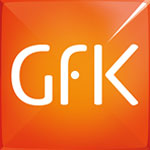Innovation drives the market for digital cameras

Although worldwide there is a large number of photo and video recording devices already in the home, the demand continues to grow. There was a boom in the first nine months of 2011, particularly in Russia, Ukraine, and Kazakhstan, where 35% was invested more in photo products as compared to last year. In Latin America, sales grew by 16% and 7% in India. The sharpest decline was seen in the Japanese photo market, which experienced a decline of 17%. This was largely due to the natural and nuclear disaster in March which had a significant impact on the economy. The high number of photo products owned by consumers was also a factor which contributed to the decrease in the market.
The relatively new digital compact system cameras are also driving the global market and up to now, have not cannibalised the demand for SLR models. The growth of these products has stimulated an increase in the DSC changeable lens segment (+17%); growth rates can be seen across all regions in the first nine months of the year. Furthermore, these products are boosting the accessories segment, in particular interchangeable lenses, bags and tripods.
Technical innovation is critical for growth
The high number of households with digital and video cameras can have an adverse effect on the market; however, this is not always the case. For example, in Sweden and Switzerland many households are equipped with cameras with changeable lenses but their unit sales developed very differently. In Switzerland, 14% more cameras were sold in January to September 2011 compared to same period of last year while in Sweden, the number declined by 6% over the same period of analysis.
In spite of how many consumers already have photo products, new features are important for market growth. Customers in Japan and India, for example, are particularly enthusiastic about new technologies. GfK market analysis has revealed that these two countries have the highest shares for products being launched in 2011. About half of the products sold in Japan this year were new to the market, while in Brazil and South Africa it was only around 30%.
Smartphones enrich and compete against the digital camera market
Currently, smartphones are highly popular among consumers around the globe. First, they may open up new user groups but could also hinder the development of digital cameras. Smartphones have a large number of comparable features, such as megapixels and autofocus, but the ability to access the internet, is one of the advantages they have over digital cameras. In China, smartphones may cut out demand for low end cameras, but at the same time, they are increasing demands for high end models as consumers are becoming more enthusiastic about photography - this is why the share of compact system cameras is higher in China and the Asia Pacific region than in European countries. In Europe, it is worth noting that there is no cannibalisation of fixed lens cameras so far; the growth of these digital cameras in the region is healthy and increased by 4% in the first nine months.
The comparison between digital cameras and mobile handsets (including smartphones) clearly demonstrates the strengths of each device. From January to September 2011, a fifth of all digital cameras sold worldwide were 16 megapixel models. Regarding mobile handsets, the segment of 5 mega pixels and less is still the most popular. The share of mobile handsets with more than 5 mega pixels is so far only 3%. In contrast, mobile handsets, especially smartphones, are leading in the areas of connectivity and touch screen technology. Global figures show that in the first nine months of 2011, only 10% of digital cameras were equipped with Wi-Fi, however for mobile handsets, the share was 24% and for smartphones it was even better (87%). For uploading photos to social networking sites, direct internet access is a major advantage.
A similar situation can be observed with regards to touch screen technology. While one in three mobile handsets has this user friendly feature only one in ten digital cameras is equipped with this function. GPS is also a common feature in smartphones; however, for digital cameras its share is still very low. This feature is however necessary for the geocoding of photos.
The argument as to whether smartphones are supporting or competing against digital cameras is one which will be continuously discussed in the future. However, there is no doubt that future trends and developments of the smartphone market will have a significant impact on the digital camera market, whether it be for demand, features and price class structure.
About the Imaging Summit 2011
The Imaging Summit 2011 is a collaborative event between GfK Retail and Technology and photokina organisers Koelnmesse and Photoindustrie-Verband. Representatives from industry and retail meet every two years to discover and exchange information on international data and trends in the imaging segment. The Imaging Summit 2011 took place in the Ofenwerk Nuremberg on 5 December. Further information can be found at http://www.gfkrt.com/imaging_summit_2011.
Source: GfK

The GfK Association was established in 1934 as a non-profit organization for the promotion of market research. Its membership consists of approximately 600 companies and individuals. The purpose of the Association is to develop innovative research methods in close cooperation with academic institutions, to promote the training and further education of market researchers, to observe the structures and developments in society, the economy and politics that play a key role in private consumption, and to research their effects on consumers. Survey results are made available to the membership. The GfK Association is a shareholder in GfK SE.
Go to: http://www.gfk.com





















